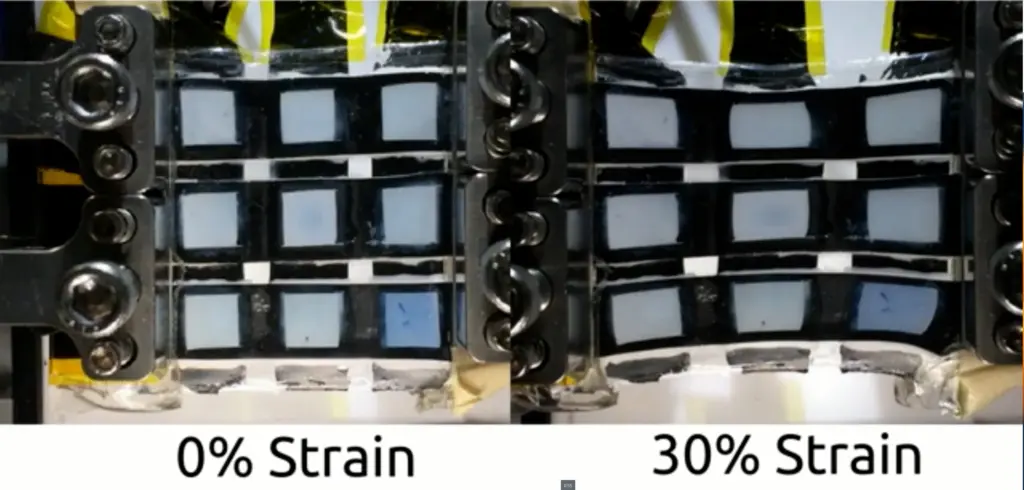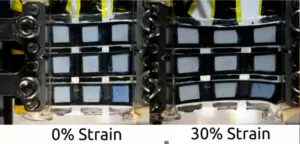Researchers at the University of British Columbia (UBC) have made a breakthrough in the development of a stretchable electrochromic display, according to a recent publication in ACS Applied Materials and Interfaces. This innovative device offers real-time, reversible color change, making it ideal for various applications.

Led by researcher Claire Preston, the UBC team employed electrochromic displays, known for their ability to change color reversibly while consuming low power, to overcome the limitations of previous stretchable display designs. They utilized a conductive polymer called PEDOT:PSS, combined with an ionic liquid, to create a stretchable electrode that serves as both the electrochromic element and the ion storage layer. This simplification of the device’s architecture eliminates the need for a separate stretchable conductor.
The resulting display is transparent and possesses the texture of a stiff rubber band. To ensure durability and flexibility, the researchers added a solid polymer electrolyte and a stretchable encapsulation material known as styrene-ethylene-butylene-styrene (SEBS). This allows the thin layers of PEDOT to stretch by up to 30% without compromising performance.
The potential applications of this stretchable display are wide-ranging. One notable application is its integration into wearable devices for biometric monitoring, providing real-time visual feedback on vital signs. Additionally, the display could find use in robotic skin, enabling robots to interact more intuitively with humans by displaying information.
The low power consumption and cost-effectiveness of this technology make it particularly attractive for disposable applications. For instance, it can be utilized in indicator patches for medical purposes, allowing for visual monitoring of health conditions. Moreover, it can be employed in smart packaging labels for perishable items, indicating changes in temperature or sterility. The stretchable display could also be utilized in the fashion industry, actively changing the color of jackets, hats, and other garments.
While further work is required to integrate this device into everyday applications, this breakthrough brings us closer to a future where flexible and stretchable displays become commonplace in our daily lives. The UBC researchers’ innovation paves the way for a new era of wearable technology, interactive robotics, and smart packaging, offering a myriad of possibilities for enhanced user experiences and improved functionality.
Reference
Preston, C., Dobashi, Y., Nguyen, N. T., Sarwar, M. S., Jun, D., Plesse, C., Sallenave, X., Vidal, F., Aubert, P.-H., & Madden, J. D. W. (2023). Intrinsically Stretchable Integrated Passive Matrix Electrochromic Display Using PEDOT:PSS Ionic Liquid Composite. ACS Applied Materials & Interfaces, 15(23), 28288–28299. https://doi.org/10.1021/acsami.3c02902

